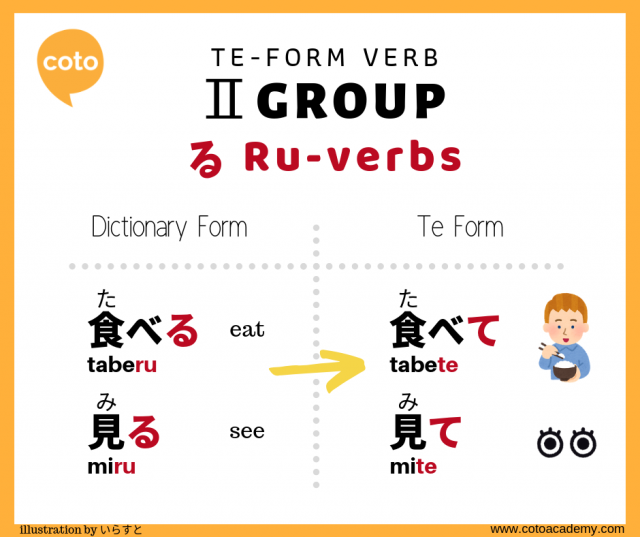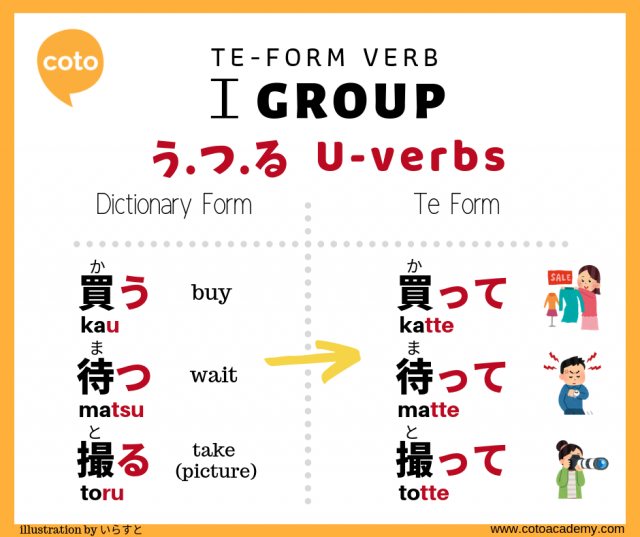Click Here to join our 30 day challenge to learn Hiragana
Japanese “Te” form Conjugation – Group 2
We will begin by introducing the Second group: Ru-verbs
Words that end in ru, such as taberu (食べる), or miru (見る) for example – belong to the group 2 verb class. We can also call them “droppers.”
As an example: Let’s look at the Japanese verb for eating – Taberu.
The second group is very easy to conjugate. You simply drop る(ru) off the end of it and add て(te).
Miru becomes mite – and taberu becomes tabete.
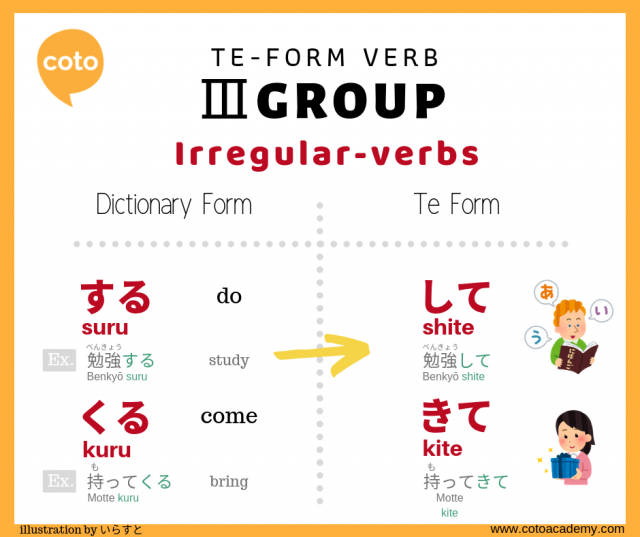 Japanese “Te” form Conjugation – Group 3
Japanese “Te” form Conjugation – Group 3
The next Japanese verb group we will cover is 3rd group or “irregular verbs.” This group is the smallest as there are only two irregular verbs in Japanese. These are both “ru” verbs – however they conjugate differently – which is why we call them irregular.
The two irregular verbs in Japanese are:
する→ to do.
くる→ to come.
Irregular verbs are verbs that have exceptions to the て form rules. Instead of simply dropping the ru and adding a te – they each have their own method.
Suru becomes shi te. and kuru becomes ki te.
する→ して
くる→ きて
For example:
勉強する→ 勉強して
電話する → 電話 して
連れてくる → 連れてきて
持ってくる → 持ってきて
This becomes easy to remember and use, just like the group 2, or dropper verbs.
Finally, Let’s talk about our group 1 verbs or U-verbs.
This group is also easy to remember – the only troublesome part to it is that there are quite a few of them.
Japanese “Te” form Conjugation – Group 1
Group 1 verbs are usually referred to as U verbs, and they make up the largest group of Japanese verbs
Group one verbs – U-verbs with final う,つ and る. U, Tsu, and Ru
For example:
To buy かう→かって Kau > Katte
To wait まつ→まって Matsu > Matte
To take (photo)とる→とって Toru > Totte
The above verbs are in dictionary form. The ひらがな of dictionary form う つ る abide by the same rules, erase the う,つ and る, add って.
– – – – – – – –
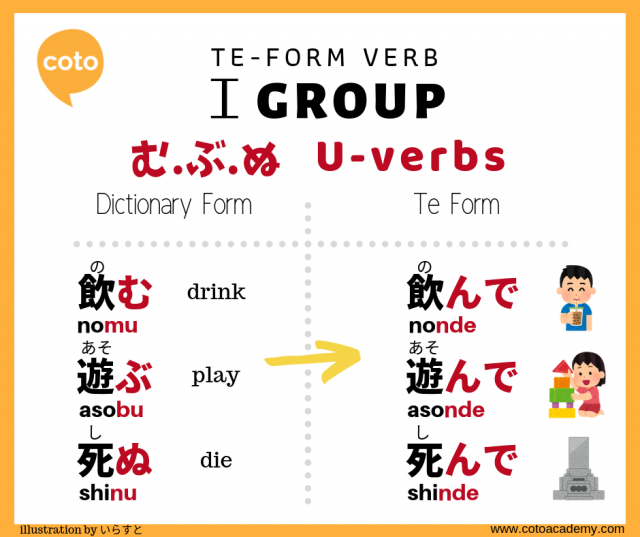
Group 1 Te-form: 飲む、遊ぶ、死ぬ
Next, we have U-verbs that end in む,ぶ and ぬ. Mu, Bu, and Nu
For example:
To drink のむ – Nomu
To play あそぶ – Asobu
To die しぬ – Shinu
Verbs with む,ぶ and ぬ endings have the same rules.
↓
のむ → のんで — Nomu>Nonde
あそぶ → あそんで Asobu>Asonde
しぬ → しんで Shinu>Shinde
Except あそぶ Asobu , there’s are only two other verbs that ends in ぶ which is とぶ Tobu (to fly.) ころぶ Korobu (to fall.)
しぬ → しんで is the only verb that ends in ぬ.
– – – – – – – –
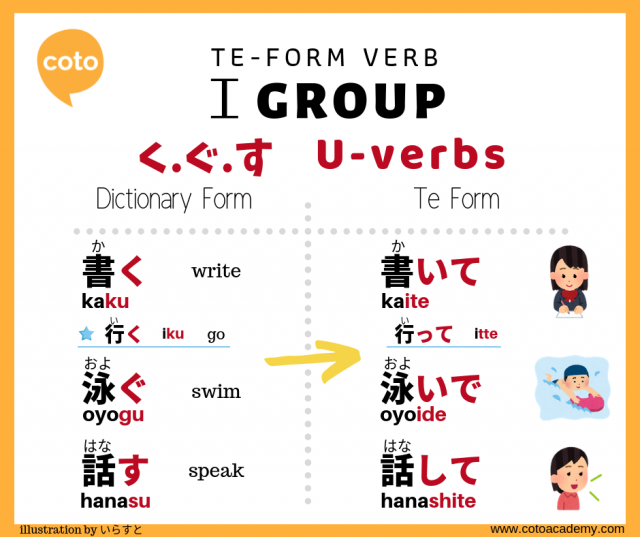
Group I Te-form: 書く、泳ぐ、話す
U-verbs that end in く – Ku
For example:
To write かく → かいて
U-verbs that end in ぐ – Gu
To swim およぐ → およいで
U-verbs that end in す – Su
To speak はなす → はなして
– – – – –
There is only one exception.
*To go いく → いって
Because いく → いいて is hard to pounce.
For the Te-form first group, we have 10 U-verbs. 1 in 2nd group. 2 in 3rd group. In total – there are 13 rules associated with te form.
If you are interested in learning how to conjugate Japanese verbs – check out our available Japanese Courses in Tokyo below.
